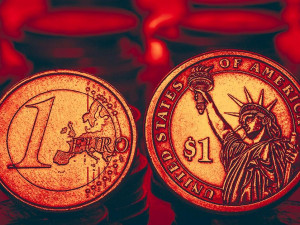
Although the latest inflation reading in the United States shows that inflation has cooled to 5%, it is still running at double-digit levels in most of Europe and the UK. To help combat inflation, in this article we look at different ways you can protect yourself against it.

Why should you try to hedge against inflation?
If inflation is above trend for a long time, the effect of compounding inflation is greater, accelerating the erosion of purchasing power.
So, much like compound interest, the effect is much greater if inflation runs at 2% a year or 8% a year for 10 consecutive years.
In the first example, with inflation at 10% a year, a sum of £1,000 becomes the equivalent of £386, losing more than 60% of its value in 10 years.
With inflation at 2%, the effect is much less – £1,000 becomes £820 over 10 years, a loss of 18% in purchasing power. The examples have been calculated using an inflation calculator – try it yourself to see how different rates of inflation affect your purchasing power.
So, if you don’t think central banks and governments can get inflation below 2% by next year, it’s time to start thinking about inflation protection.
Hedging against inflation with inflation-beating asset classes
Hedging against inflation is always risky because riskless or low-risk investments tend to yield less than the rate of inflation, as we are currently seeing with savings accounts and government bonds.
Despite the rise in interest rates, the best buys in easy-access accounts are yielding just over 3%, according to MoneySuperMarket.
For fixed-rate bonds, this rises to 3.35% for a fixed duration of 5 years. 10-year UK government bonds are currently paying over 3.6%.
None of this is enough to maintain real purchasing power. So if you want to beat inflation, you need to look at investments that carry a higher degree of risk, meaning their price could fall if inflation eases.
Let’s look at the top four inflation-protecting investments:
1. Gold
Gold has long been seen as a hedge against inflation. Despite the fact that gold pays no interest, it has performed extremely well during inflationary periods such as the 1970s. In fact, the price of gold rose by more than 2,300% between its low in the 1970s and its high in the 1980s.
Again, the main argument is that gold pays no interest, so if its price does not rise steadily, you will lose out to inflation and other investments.
2. Commodities
Like gold, other commodities such as oil, energy, metals and agricultural products have performed well during inflationary periods, again using the 1970s as an analogue. However, unlike gold, these commodities are not easy to invest in. Like gold, commodities don’t pay interest, so you lose out on inflation if their prices don’t rise.
Another word of caution is that the funds or ETFs that invest in commodities usually do so through futures: they buy the commodity in the future, when the market may have already priced in a price rise. If they only buy short-term futures and roll into the next futures contract on a monthly basis, they may accumulate losses due to roll-yield.
3. Treasury Inflation-Protected Securities (TIPS)
Treasury Inflation-Protected Securities (TIPS) are a fixed income instrument whose value is linked to the rate of inflation. The value of the bond is indexed to inflation and the price rises, so the value is maintained as inflation rates rise. These bonds can be bought through TreasuryDirect.gov for the US or through a broker for the UK version of these securities, called index-linked gilts, which work slightly differently.
Again, of course, there is a caveat: if inflation falls, these bonds would earn less than fixed-rate gilts of the same maturity.
4. Stocks, in particular small caps and dividend-payers
It has been observed that companies that can demonstrate consistent growth in net earnings, as well as increasing dividend payments to shareholders, can provide a hedge against inflation.
This is because dividends have been an important component of stock market returns since 1930, accounting for around 40% of the total return of the S&P 500. During decades of high inflation, dividends accounted for 54% of total returns, demonstrating the ability of dividend-paying stocks to protect investors from inflationary market changes.
Furthermore, during periods of high inflation, dividend stocks that have increased their dividends the most have historically outperformed the overall market. Dividend growth stocks are likely to outperform if inflation remains high. This suggests that investors may find value in dividend-paying stocks during periods of rising consumer prices.
In addition, dividends have the potential to reduce the volatility of equity returns because companies tend to pay dividends on a regular basis and often adjust them based on a variety of factors. This helps to provide investors with a steady source of income when share prices are rising or falling and can help to offset the effects of market price fluctuations.

Currency hedging against inflation
Do you live in a country with excessive inflation? Think about hedging your currency exposure with forward or spot hedging against a depreciation in your home currency.
Currencytransfer can help: we have a number of FCA regulated partners on our global payments network, giving you access to competitive rates and world class support. Sign-up now to get access to our platform.
G.C. Wagner
Gustav Christopher is a writer specialising in finance, tech, and sustainability. Over 15 years, he worked in banking, trading and as a FinTech entrepreneur. In addition, he enjoys playing chess, running, and tennis.



